While reading The Lord of the Rings or The Silmarillion, a student of J.R.R. Tolkien’s literature is as likely to see the corpse-strewn moors of northern France in Mordor as to behold the Roman-era Saxons moving quietly through the deep forests of the Rhineland/Mirkwood, or to hear an Old English poet softly reciting the passages of “Beowulf” and other classic tales before a fire and rapt audience. The stories feel so real that our practical experiences help us easily build mental pictures for them.
The Lord of the Rings weaves a story around its readers, awakening a curiosity about what could be or might have been. The Silmarillion unveils an imaginary history with such reverence that it has been compared to the great works of the world’s faiths. We are drawn into the lives, cares, frustrations, and morals of the characters as easily as chatty house-wives gossiping about their neighbors in a small village. Middle-earth feels like our village, the world we know and in which we live out our lives. And despite nearly 80 years of dissecting J.R.R. Tolkien’s meanings and intentions, we’re still not quite sure why that should be so.

Tolkien’s maddening habit of halting a story in almost mid-sword-stroke to back up and reveal some other detail previously only alluded to in hints and whispers has infuriated as many readers as those it has delighted. Some people relish having to wait for Sam to find Frodo in the Tower of Cirith Ungol; other people wonder what the purpose of the Tale of the Moon and Sun is supposed to be, just as things are starting to get less complicated and a little more dramatic in the slowly unfolding saga of the Noldor and their silly war for three elf-made jewels.
This mode of ever-stopping and resetting and restarting the tale, of projecting a hint of something deeper and more ancient upon the backdrop of the story and then zooming in to explore its inner themes, of sliding back and forth through the calendar with the ease of master weaver threading a loom – this incessant story-telling has compelled people to ask, “What does it all mean?” and “Where did he come up with THAT?”
The study of Tolkien’s literature has been criticized at many levels. Some of our most popular scholars have written thoughtful and provocative defenses of the art of Tolkien criticism; but just as the chorus of literary analysis has gradually risen to a crescendo of extensive achievement its siblings, study of Tolkien’s invented languages and inquiry into the body of myths and literature from which he drew his inspiration, have found less ardent support from the ranks of readers.
My own readers have oft noted my focus on the story itself and its internal structure, my efforts to see Middle-earth as a complete body of history and tradition, simply because it seems so full and robust. And yet those who read this Website will have seen that even I scour the (possible) sources for illumination. The story makes better sense when you understand why it works the way it does, and that understanding comes from walking in Tolkien’s footsteps, tracing the paths he followed through literature and language to build new legends out of old legends.
Tolkien’s practice of abandoning a story only to resurrect portions of it in a new tale that seems like and yet unlike the old story reflects his practice of adapting traditional stories or story elements to his uses. Hence, Valinor is a shoreline approached by the great whale Uin in Roverandom; and the far western shores of the Undying Lands are but a stopping point on Smith of Wootton Major’s relentless wanderings – the character (and reader) passes through a world where he is a stranger, forever wandering across an enchanted landscape where he is only welcome for a short time.
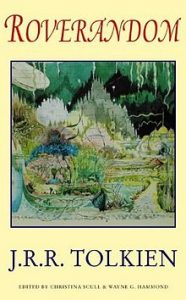
That is the essential cleverness we want to understand and appreciate. For some people, the quest to know why and how has drawn them into the perilous land of discovery and re-invention. Through that re-invention they enact a process of experimentation that reveals new insights into how and why Middle-earth took on its present shape. We want to see the artist at work, almost as if we could gaze into a palantir and behold Fëanor at the height of his craft.
All of which is to say there is intrinsic value in studying and learning how the tales were composed at all levels: from the borrowings of ideas of ancient poems and mythologies, to the recasting of those ideas in secondary and tertiary retellings, to the weighing of the illogical and impractical adaptations against each other until they become firm and prosaic accoutrements for a master story-teller’s expression of both vision and wisdom.
Source criticism, as it is called, is an art subtle enough to both defy and demand explanation. Many who have practiced the art have been denounced. The claim or suggestion that an idea may owe something to an obscurity suffers a tempest of retribution if a cherished belief is thereby challenged. Even among the darers and doers of source criticism we find conservatism and a reluctance to commit to specific ideas, perhaps out of scientific prudence, but certainly because one foolish statement may forever ruin the credibility of all one’s observations.
Jason Fisher is only the latest champion to stand before the dragon of public and scholarly opinion to offer his best attempts to unveil the deeper mysteries of Middle-earth. If we wish to flatter him we could applaud his stratagem of inviting others to share the challenge with him, although source essays have been published in numerous newsletters and journals through the years. As editor of the Mythopoeic Society’s Mythprint publication for the past couple of years, Jason’s most public work hasn’t focused on source criticism.
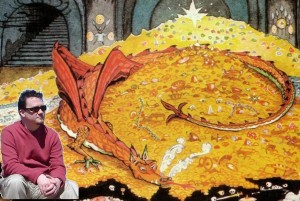
Still, we must grant that Tolkien and the Study of His Sources — the collection of essays Jason shepherded to publication this year – moves the field forward in the quest to define how Tolkien Source Criticism should be attempted. The boundary marks are faint for few have left them, so measuring success is difficult. Where we draw these lines and how we define our measures govern the general success of these efforts. For though many experts could offer you an easy, simple explanation of what works and what should be done, comparing their insights to each other is an epic struggle of wit and wisdom.
So much preamble, I feel, is necessary to set the context in which I asked these questions of Jason. Source criticism appeals to many different points of view; we need to understand those points of view as much as we want to understand what source criticism seeks to accomplish. One article does neither topic justice; and so with that, I present to you my interview with Jason.
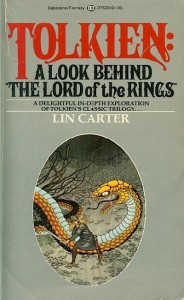
MM: Tolkien source criticism goes back at least as far as January 16, 1938, when the Observer published a letter, signed “Habit”, that posed some questions about Tolkien’s sources for Hobbits. However, a casual reader is probably more likely to have heard of Lin Carter’s A Look Behind the Lord of the Rings as an early example of source criticism. When did you pick up an interest in source criticism? How did you decide to approach it yourself?
JF: Lin Carter’s book was one of the first secondary works I read during my juvenile phase — juvenile both in terms of my age and my understanding of Tolkien. Though Carter’s book is much derided now — and rightfully so; it is full of mistakes and misinterpretations — it did inspire me to try to look behind the curtain. I think it’s how I learned there was a curtain to look behind! Prompted by Lin Carter and also by Humphrey Carpenter, first in his biography of Tolkien, and then a couple of years later with the publication of Letters, I read Beowulf in grade school. It was the Burton Raffel translation, in a cheap paperback edition with a cover illustration that reminds me of Pauline Baynes in my mind’s eye. As you’ll remember from Tolkien’s response to “Habit”, Beowulf was one of his most important sources.
So it’s à propos you mention Carter; he was certainly a big part of my earliest interest in source criticism. Ruth S. Noel’s The Mythology of Middle-earth (1977) was another one I enjoyed as a youngster; again, usually dismissed these days, but it did the trick at the time. So I became interested in following Tolkien back to his sources, a bit like Gollum, I suppose, with his curiosity for burrowing after roots and discovering the “great secrets buried there which have not been discovered since the beginning” (to borrow a phrase from Tolkien). While reading some of the medieval works thought to have inspired Tolkien, I found I had an almost insatiable taste for them myself. That would end up predisposing and qualifying me to undertake some source studies of my own later, but all of this was mere predilection for the longest time. They interested me, and I enjoyed reading them, but I wasn’t doing source criticism myself. Until …
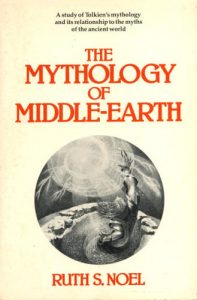
What really “set the rocket off,” borrowing from Tolkien again, and led me to begin my own research was Tom Shippey’s The Road to Middle-earth. The first edition was published around the time I was first dipping a toe into the secondary literature on Tolkien, but I didn’t discover Tom’s book until the revised edition, many years later. This was a revelatory experience, one which has guided me ever since. I had the good fortunate of meeting Tom at Marquette in 2004, and I’ve had many great conversations about Tolkien with him in the years since, mostly by email, but several times in person, the best a long evening of Tex-Mex and cerveza in Oklahoma. When Tom — my role model for Tolkien criticism — agreed to write an introductory chapter for my book, Tolkien and the Study of His Sources, it was like having a dream come true.
MM: In addition to the works of J.R.R. Tolkien you have written critical essays about other authors who draw upon mythological influences, such as Lloyd Alexander and Alan Garner (for “Journey to the Sea”). Are there are others whose works you have investigated? If so, can you summarize that work briefly?
JF: Yes, many authors draw on sources in a deliberate way, and I have often found it interesting and illuminating to explore those influences. Alan Garner is a particularly good example, with his varied borrowings from the folklore of his local Cheshire and the deeper mythological traditions of northwesternEurope(mainly Norse and Welsh).
Another is C.S. Lewis. There is a great deal of work still to be done with respect to Lewis’s sources. The majority of the essays I have seen on him take other approaches, often with a particularly theological angle, but like Tolkien, Lewis was an inveterate borrower. I am hardly a Lewis expert, but I am learning more all the time, and I have ventured a few short studies in this direction — and I would like to see more!
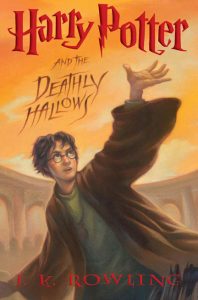
And I should add J.K. Rowling here as well. I have written quite a few short pieces about her use of source material. To me, the most fruitful line of inquiry in Rowling studies — so nascent that perhaps even calling it that is avant la lettre — is in her intricate and clever nomenclature. After Tolkien’s, Rowling’s nomenclature is perhaps the most developed and inventive of any other author I know. A number of the pieces I’ve written have to do with the etymologies of Rowling’s names. To give just one example, there is the Wizengamot, the high court of the British wizarding world. Anyone with a background in early English history will see at once that this bon mot is an adaptation of the witenagemot, the king’s advisory body in Anglo-Saxon England. For readers with an interest in what I’ve had to say about Harry Potter, refer to my blog and filter the posts on the label “J.K. Rowling”. I’m hoping to work up to something of greater length in the future.
MM: You have written an essay, “Horns of Dawn: The Tradition of Alliterative Verse in Rohan” (published in Middle-earth Minstrel – Essays on Music in Tolkien) that goes into greater detail than just examining the form of Tolkien’s poems. How did you come to study Old English? Is there a connection to your interest in Welsh and other European folklore/mythology?
JF: I was interested in Old English and Old Norse from an improbably young age. French and Latin as well. I can remember calling enemy classmates hrísungr (Old Norse: “bastard”) when I was just eleven or twelve years old. Yes, I was that kid. I still am, I suppose. As I’ve mentioned already, I first read Beowulf at about age ten (in translation), and by junior high school I was taking the first awkward steps to learn some of the language behind the poem. I continued, haltingly, all through high school and college, but I began to study Old English more seriously and systematically when I entered graduate school in 1993. My Old English professor was Bob Boenig, who, unknown to me at the time, has published an essay or two on Tolkien himself. Such things always seem to come full circle, don’t they? I’ve been studying Old English, Old Norse, and other languages in my leisure time ever since. Some languages I’ve been chipping away at for twenty years, some for thirty!
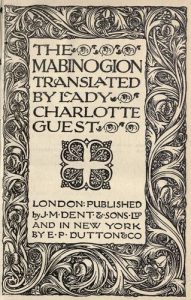
I don’t pretend to be anywhere near as expert in Welsh as Dimitra Fimi, Carl Phelpstead, or my friend Mark Hooker, but it’s another of those interests that was sparked by my fantasy reading early on. Reading Tolkien, Garner, and especially Lloyd Alexander led me to the Mabinogion. I still have a wonderful facsimile copy of the Lady Charlotte Guest translation given to me on my fifteenth birthday and inscribed by my oldest friend in runes. Yes, runes. We were those kids, the ones who passed notes in class carefully written in runes so that, if confiscated (as happened far too often), the teacher couldn’t read them. Sometimes we let her catch us on purpose, just to see the look of powerless rage on her face when she tried to read the note.
Later, I discovered the Finnish Kalevala in the same way. In many cases, I came to works of folklore and mythology through Tolkien, but in nearly all cases, these works are quite rewarding enough to deserve being read all on their own. Tolkien certainly thought so. As I have written in my book and elsewhere, I think this is one of the great satellite benefits of source criticism.
Elias Lönnrot compiled the Kalevala in the 19th century from Finnish and Karelian songs and poems; the Kalevala became a national epic for Finns. It is generally accepted as a source for some of the elements of the Turin story, though not to the extent that some populist analyses produced for television would have people believe. The Mabinogion is a collection of 11 stories collected from medieval Welsh manuscripts. Lady Charlotte Guest (1812-95) was the first English-language translator for these stories. Several of the stories feature the Welsh king Pryderi in both leading and supporting roles. Some of Lady Guest’s translations also deal with early Arthurian legends. –MM
MM: In an interview with the Tolkien Library, you said: “So far as I know, my book is the first and only book of its kind on this subject. Many individual source studies have been published … but no book of which I am aware has attempted to lay out the methodology and background of the discipline, and then to survey Tolkien’s sources systematically across the whole historical range of the western canon.” That seems a fair assessment to me but why do you think it has taken this long for such a collection to appear? With all the attempts at source criticism, including those early attempts that Tolkien himself fended off, what was the missing element that prevented people from coming together and attempting to define the subject with a definitive collection of viewpoints?
JF: I think a major reason is that source criticism has come to have a bit of a negative reputation in the Academy. For one thing, it has, like philology, largely fallen out of fashion in the wake of newer critical vogues. For another, as I say in the preface to my book, there have been many poor examples, which have had the unfortunate effect of undermining the whole discipline in some people’s eyes. In part, my book is intended as a corrective to such attitudes. It is also intended to be instructive, from a methodological standpoint, with the aim of mitigating some of the poorer research in the future by offering what I hope is a sound roadmap to the discipline.
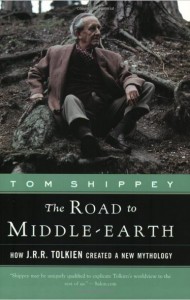
Also, I think it’s much easier to write a short, narrowly focused essay speculating on the sources for a particular name or episode than it is to find larger patterns or to bring these together into a cogent whole. Even the few books which might be called extended source studies (such as The Road to Middle-earth) have not made an attempt to explain the approach, to describe its methodology, or to lay out its rewards and pitfalls in a systematic way. Such books have, in a sense, been preaching to the choir (and what a sermon!), but in my book, I wanted to address the devils as well. I hope I have offered them a chance for conversion, but if not, then at least the choir will continue singing.
MM: I have read several statements by you where you suggest that much ground has been covered in source criticism, to the point where you feel that only a few areas remain to be explored. Can you provide examples of a few areas where you feel there is room for more study and analysis, such that some diamonds in the rough may yet be discovered?
JF: Well, I don’t mean to imply that the work is almost finished! But certain groups of works or literary-historical periods have been explored much more thoroughly than others. Tom Shippey wrote a guest editorial for Mallorn a few years ago (“An Encyclopedia of Ignorance,” Mallorn 45 [Spring, 2008]), in which he identified some of the areas he felt had been underexplored but which still hold the potential for interesting discoveries. One of the deliberate goals of my book was to begin to fill in some of those lacunae. Other scholars have been fellow laborers in the vineyard — for example, Dimitra Fimi on Tolkien and Victorian fairyology, or Dale Nelson on less familiar nineteenth- and twentieth-century influences — but there is plenty of earth left to till.
Speaking of Dale’s research, the influence of Victorian and Edwardian writers has not been fully explored. In my book, John D. Rateliff and Mark T. Hooker offer compelling comparisons of Tolkien with H. Rider Haggard and John Buchan, respectively, but what about J.M. Barrie, Rudyard Kipling, Charles Kingsley, and others? There is clearly more to be said. Even of Haggard and Buchan, Rateliff and Hooker have not yet had the final word.

I think there is still a good deal more to be found among Classical sources, Late Antiquity, the Renaissance and Restoration. Even in well-tilled ground like the literature of the Middle Ages, I suspect there are still many interesting roots to dig up. Numerous individual words and names of Tolkien’s invention remain unexplained. Not that I mean to imply that every single name or word must be explained by a source outside Tolkien’s own imagination, but it is clear that many can be. I dig into sources of this kind on my blog all the time, and I encourage others to do likewise. Malcolm Godden, the Rawlinson and Bosworth Professor of Anglo-Saxon at Oxford (the same academic chair Tolkien once occupied), has written that “it is clear that the scholarly implications of names, languages, allusions, and quotations form a very real part of the pleasure and substance of [Tolkien’s writings] and that one of the most useful things that Tolkien-criticism can do is to explain them.” This is my view, and I intend to go on explaining them.
MM: As an example of something that struck me as new, I recently came across an article that mentioned the Slavic word “drug” means “friend, companion”. I was immediately reminded of Tolkien’s name for the Druedain, whom he was (toward the end of his life) developing into a sort of companion clan or race for the Three Houses of the Edain. Of course, attempts to explain the true etymology of the name “Radagast” have drawn upon Slavic mythology. How much interest do you think there may be in Tolkien’s Slavic influences? Is that an area deserving of more attention?
JF: Yes, друг is “friend” in Russian. It’s one of many Russian words that found their way into Nadsat, the fictional pidgin in Anthony Burgess’s A Clockwork Orange. I hadn’t thought of this in light of Tolkien, though it’s an interesting idea. But now that I’m considering it, I think a likelier source of Tolkien’s Drûg-folk would be Old English dryhtfolc, meaning “people, troop”. This word occurs in the Old English Exodus, a work Tolkien studied closely and on which he lectured to a specialist class at Oxford. Where Tolkien is concerned, there is usually more reason to presume an Old English source than a Slavic one, though there is little conclusive evidence either way. But this is how much of my own research begins.
But back to the thrust of your question. There are some signs of Slavic source material in Tolkien’s writings. Radagast, Variags, and Medwed (the original name for Beorn in The Hobbit) are almost certainly of direct Slavic derivation. I think there is a great deal of enthusiasm for the discovery of Slavic influence, particularly among Slavic people themselves who, in my experience, seem to have a personal and emotional stake in claiming a piece of Tolkien’s imagination. I hear this from many people who have come out from behind the Iron Curtain, where Tolkien was once banned, but secretly circulated in samizdat editions. I do think it’s an area worth a closer look, but one must be cautious about beginning the inquiry with a specific target in mind. If the objective is to find Slavic influence, one will probably “find” Slavic influence.
For instance, someone from Russia recently told me he thought the name Mordor “was taken directly from the Ural province of Mordovia.” I think there is probably some genuine Slavic influence to be found, but one must go about it the right way. I wrote about this topic on my blog a couple of years ago, and the post generated a lively discussion in which several of the participants shared an insider’s view.
John Rateliff devotes an entire chapter in The History of The Hobbit to exploring Medwed and Tolkien’s handling of the character. He talks at some length about probable Slavic influences. –MM
MM: I am sure you have read more Tolkien criticism than me. I haven’t really come across any studies or analyses of Tolkien’s genealogical styles and methods. His genealogies, of course, are studded with anecdotes that seem to have given rise to whole stories, sometimes family-based sagas. How much research have you seen in this area? Do you think it’s something that should be studied?
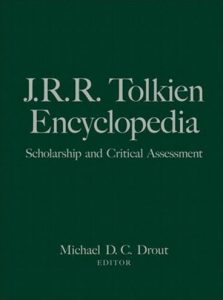
JF: I have seen some research on this subject, but not a great deal. One that comes to mind is an essay by the late Daniel Timmons: “J.R.R. Tolkien’s Genealogies: The Roots of His ‘Sub-Creation’” (Mallorn 34 [1996]). “I wonder,” Timmons writes, “how many of us ever pause and reflect on the incredible ingenuity of Tolkien’s genealogies. Notice how many names there are, and the sheer variety and inventiveness of them. The attention to detail, the care and diligence evident in the design of these ‘Family Trees’[…].” Indeed!
It’s ironic you would ask me about this, since I wrote the entry on “Family Trees” for Michael Drout’s Tolkien Encyclopedia. I tried to adumbrate some directions for further study in that entry. I know of a few other essays and passages from books which touch on family trees and genealogy, but more often the subject turns to race, gender, bloodlines, and their implications, rather than the mechanics of the family trees and the interrelationships they make visible. I think the family trees themselves and the stories that emerge from them are ripe for further digging. I would say the same of other “practical artifacts” in the peritexts of Tolkien’s books, such as maps, calendars, time-schemes, rune-tables, and so on.
Coincidentally, the new Beyond Bree (December, 2011) features a lead article on the subject of Tolkien’s genealogies by David Cofield.
MM: In your essay “Some Contributions to Middle-earth Lexicography: Hapax Legomena in The Lord of the Rings”, you chose as one of your examples of rarely used words “leechcraft” (and subsequently “leech”). You trace the word back to Old English lǣċecræft but go no further than that. You have a strong interest in linguistic studies. I think it’s curious that “leech” is ultimately traced to Proto-IndoEuropean *lep-agi (“conjuror”). How much does the Tolkien linguistic community look at possible Proto-IndoEuropean-based models for Tolkien’s language transformations/evolutions? Did he simply devise his own roots and rules or are there identifiable correlations with *PIE and its historical derivations?
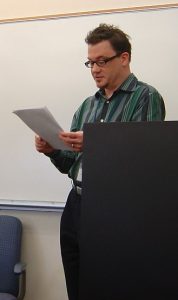
JF: Let me take the latter questions first and then venture some thoughts about the specific case you mentioned. Yes, there is a certain faction of Tolkien scholars who are very interested in possible connections between Tolkien’s words, nomenclature, and invented languages and real-world languages. I play in this space myself and have shared many of my own speculations over the years. Mark Hooker is another prolific researcher in this domain. And there are a few others of note. I think there is plenty of evidence to connect many of Tolkien’s words and names with real Indo-European (and especially Germanic) roots. This is especially true in his earliest work — e.g., The Book of Lost Tales, The Gnomish and Qenya Lexicons, etc. Tolkien has even admitted it himself on occasion (e.g., “Middle-earth”, “Ent”, “Orc”, etc.).
As for “leech”, its origins aren’t quite so clear as some etymological resources make out. It may derive from a root meaning “conjuror” or something similar, but then again, it may not. Once you’ve extrapolated your way back into the mists of time to a point long before any written records, there is little certainty. Most of the etymological sources I have consulted are careful to say “perhaps” in this case. It’s not even absolutely certain that the two leeches (the physician and the animal) are etymologically linked, though it is generally believed to be so. But I certainly like the idea of “leech” going back to “conjuror”. Calvert Watkins seems to agree (again, with an obligatory “perhaps”). He connects “leech” to Germanic *lékjaz “enchanter, one who speaks magic words”, which in turn derives from a root meaning “to speak”. Modern reflexes of this root ramify in all directions, each telling its own tale — dialect, lecture, lexicon, legend, logic, and many more. This is the very magic of language. Speakers of languages, in a very real sense, really are enchanters.
MM: What goes in to preparing an issue of Mythprint? For example, you maintain a list of books awaiting reviews. What are the criteria for selecting the books? Do you have preferred reviewers? How does an author get on the list?
JF: The list of books awaiting review is simply everything publishers have offered me for review. Most of the time, these are books sent to me by mainstream publishers of genre fiction — Random House, Ballantine, HarperVoyager, Tor, and so on — sent without any specific request on my part. Essentially, they send me everything! I offer it for review, but the truth is, most books go unclaimed and end up donated to my local library. I receive perhaps two dozen books every month, and it is up to readers to volunteer to review them. A smaller number of books on the list are ones I have learned of and requested specifically. These usually go to reviewers quickly, often to people with particular background or qualifications, sometimes without even making it to the list on the Mythprint website.
I do not have anything like an official list of preferred reviewers, but there is a core group of regular reviewers on whom I have come to rely. These are voracious readers, conscientious reviewers, and good writers. Sometimes I will approach a frequent reviewer with a book of the type he or she has reviewed before. But in general, I am happy to consider assigning reviews to first-timers in Mythprint, and even to people who have never written a book review before for anyone. I’d like to encourage anyone who sees a book of interest to write me and offer to review it. And not just books. I’m interested in running reviews of film, television, music, university classes, conferences and conventions — anything with a mythopoeic angle or interest.
MM: If you could ask J.R.R. Tolkien a single question and expect a full, direct answer, what would it be?
JF: Fascinating question! I would be tempted to ask for confirmation on one of my cleverer source theories (cleverer according to me; to Tolkien, perhaps not so much!), but that would probably be throwing away an opportunity. I think I would probably ask Tolkien what really happened to his friendship with C.S. Lewis, the whole story. No ergo silebo’s permitted; I’d tell Tolkien, ergo non sileto! Oh, and could he let me have just a peep at “The Ulsterior Motive”?
Biographical Note
Jason Fisher is an independent and award-winning scholar specializing in J.R.R. Tolkien, the Inklings, and Germanic philology. He is the editor of the collection, Tolkien and the Study of His Sources: Critical Essays (McFarland, 2011), to which he also contributed a chapter on the methodology of source criticism. Other publications include twelve entries in the J.R.R. Tolkien Encyclopedia: Scholarship and Critical Assessment (Routledge, 2006); contributions to eight books (three forthcoming); essays in Tolkien Studies, Mythlore, The Year’s Work in Medievalism, Beyond Bree, North Wind, Renaissance; and many book reviews. In 2009, Fisher delivered a half-day lecture on Tolkien, Old English, Old Norse, and Gothic at the Tolkien Summer Institute at Texas A&M University – Commerce. He has spoken at academic conferences across the United States and will be a special guest at the Tolkien Society’s Return of the Ring conference next year at Loughborough University in Leicestershire. Jason is also the editor of Mythprint, the monthly publication of the Mythopoeic Society. He writes a blog, Lingwë – Musings of a Fish, in which he has been discussing Tolkien, Lewis, Rowling, language, etymology, and related topics since 2007. He is available for Old English recitations at “Beer and Beowulf” parties. You provide the beer; he’ll bring the Beowulf.
# # #
Have you read our other interviews with Tolkien scholars?
